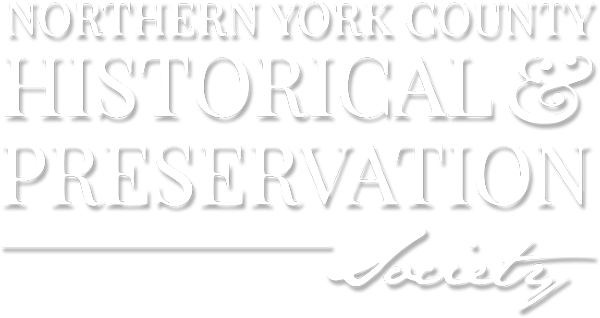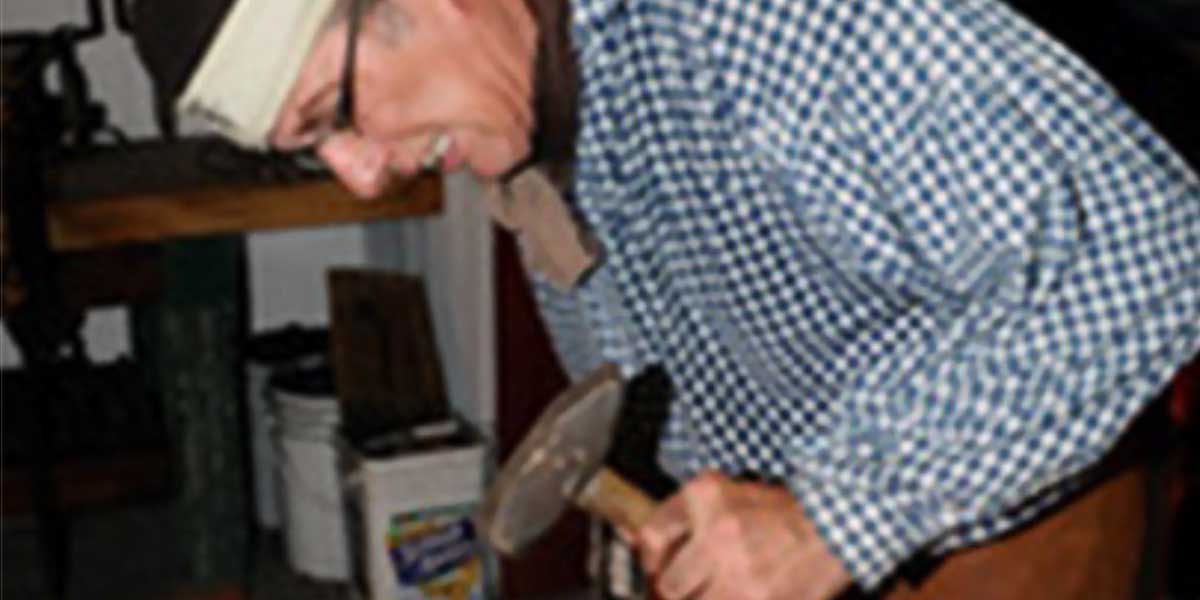
Impractical Distillers: Vol 1.1
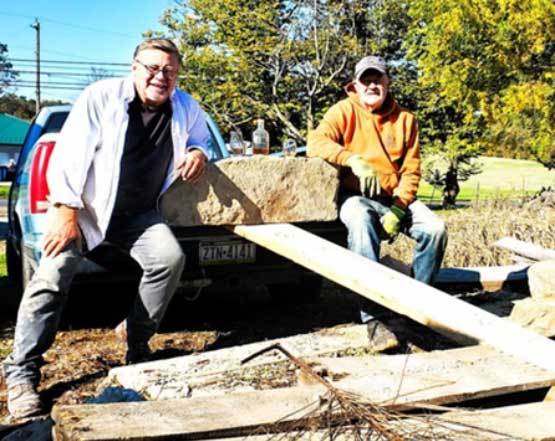 Who are they?
Who are they?
In 1808 Samuel McHarry of Lancaster, Pennsylvania wrote a distilling manual entitled: The Practical Distiller: An Introduction to Making Whiskey, Gin, Brandy, Spirits of Better Quality and in Larger Quantities Than Produced by the Present Mode of Distilling. In the Preface of the book, the author confesses his ignorance of “the dark, mysterious and abstruse science of distilling, a business professed to be perfectly understood by many, but in fact not sufficiently understood by any!” McHarry was certain “the whole art and mystery could be learned in two or three weeks, or months at the farthest”. After four years of constant attention and experimentation he developed a system. As the “wise Disposer of worlds” allows for exhibition of genius, he shared his knowledge so that “men of capital and science could turn their attention to the production of ardent spirits equal to those anywhere in the world”. His wish was to convey the necessary instruction to those who may honor this work with a perusal, or resort to it for information, and that it be ”useful to my countrymen”.
Two hundred years later, two men, Sam McKinney and Murray Small found McHarry’s publication not only useful, but fascinating. That fascination led a quest to build a historically accurate distillery, utilizing the technology and techniques of McHarry’s time to educate the public and promote the distilling heritage of Central Pennsylvania through living history.
McHarry faced skepticism. There were “scoffs of pendants, kicks, bites and bruises of critics”. Conversely, he didn’t encounter the substantial government rules, regulations, bureaucracy, codes and red tape of legal distillation in the 21st century. Compounding the challenges, the project is part of the non-profit Northern York County Historical Preservation Society (NYCHAPS). Like McHarry’s path, much of our road to an accurate portrayal of early American distilling was traversed ”without a compass, chart, or even star to steer by”. Critics described the project as imprudent, ill-advised and impractical. But we never gave up!
After almost 15 years of tireless effort, energy and entrepreneurial spirit, the small non-profit opened the Eichelberger Distillery at Dills Tavern in May of 2024. Future NYCHAPS’ newsletters will tell this remarkable story in a new column entitled: The Impractical Distillers!
by Murray Small
The Dream Begins...
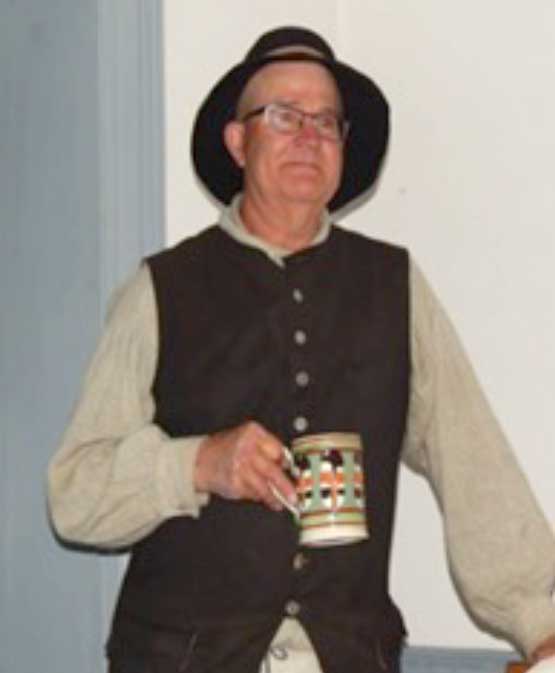 NYCHAPS hired me to reconstruct the historic Dills Tavern in January of 2005. During the first year, I read the Eichelberger ledgers which consists of detailed business operations conducted at the tavern property from 1800 to 1833. My goal was to understand tavern life in early Dillsburg. 1500 pages of handwritten documents, some quite boring, depicted daily life. Occasionally, there were mentions of broken chairs, broken glasses, and other curious lines but mostly the ledger chronicles local and other regular visitors who came for whiskey, lodging or meals. My initial reading focused on gleaning tavern information. But during the second reading; a couple of years later, I was shocked to realize I had not noticed there was a distillery on the property.
NYCHAPS hired me to reconstruct the historic Dills Tavern in January of 2005. During the first year, I read the Eichelberger ledgers which consists of detailed business operations conducted at the tavern property from 1800 to 1833. My goal was to understand tavern life in early Dillsburg. 1500 pages of handwritten documents, some quite boring, depicted daily life. Occasionally, there were mentions of broken chairs, broken glasses, and other curious lines but mostly the ledger chronicles local and other regular visitors who came for whiskey, lodging or meals. My initial reading focused on gleaning tavern information. But during the second reading; a couple of years later, I was shocked to realize I had not noticed there was a distillery on the property.
There were pages of information on distillers who contracted to make whiskey, sometimes for long periods of time. One page was titled “1811 Distillery Inventory”. Other pages told how whiskey was hauled in a “road wagon” or Conestoga wagon to Baltimore. Hundreds of entries documented purchases of grain and paying for labor to harvest grain. My myopic focus had caused me to miss an important facet of the site’s history. Fortunately, a light bulb went off in my head flashing, “THERE WAS A HUGE EARLY DISTILLERY ON THE TAVERN PROPERTY ”.
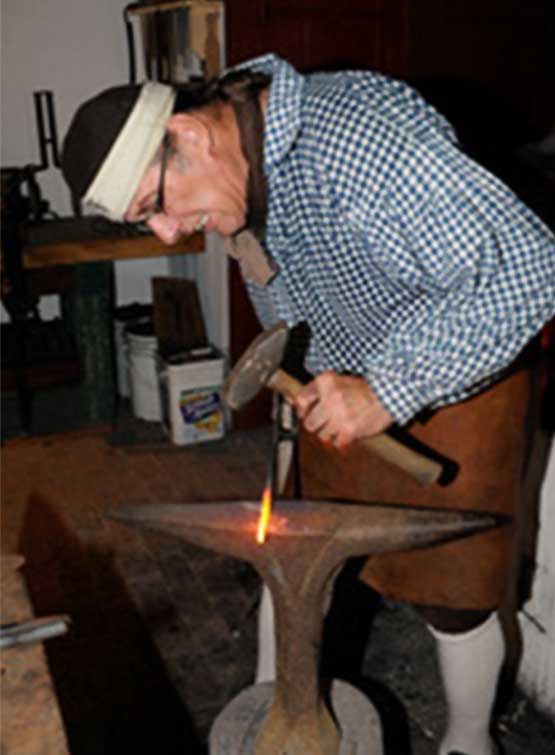 Sometime in 2010, Murray stopped by Dills Tavern. The log barn, from several miles away, was on site and under reconstruction. Adjustments had to be made to the hand-hewn timbers and some of the ends or “drops” were cut off and piled up. Murray was interested in the ends for sculptures he was building. He was greeted at the gate by George Platts, a blacksmith and docent giving tours of the tavern. “Are you here for the tour,” George asked. “ No, thanks, what are those timbers behind the barn?” Murray inquired. “It’s only 5 bucks.” the pushy docent offered. “Well, I’m really here to…”. “ It’s a great tour” the intrepid tour guide, clad in 18th century garb, implored. “ OK, OK, here’s 5 bucks”.
Sometime in 2010, Murray stopped by Dills Tavern. The log barn, from several miles away, was on site and under reconstruction. Adjustments had to be made to the hand-hewn timbers and some of the ends or “drops” were cut off and piled up. Murray was interested in the ends for sculptures he was building. He was greeted at the gate by George Platts, a blacksmith and docent giving tours of the tavern. “Are you here for the tour,” George asked. “ No, thanks, what are those timbers behind the barn?” Murray inquired. “It’s only 5 bucks.” the pushy docent offered. “Well, I’m really here to…”. “ It’s a great tour” the intrepid tour guide, clad in 18th century garb, implored. “ OK, OK, here’s 5 bucks”.
After the tour, docent and tourist walked onto the brick courtyard. George stated, “there was a distillery here on the property at one time. We are going to re-build it someday. The guy who is going to re-build it is back there”. He pointed to me, in the doorway of the Wheelwright Shop.
Already a student of whiskey, Murray hastened his way to the shop and a conversation ensued. From that conversation, a dream was born. With the same naïve inspiration of McHarry’s nascent entry into the arcane art of 18th century distillation, Sam and Murray began the journey to build an 18th century distillery in the 21st century.
by Sam McKinney


